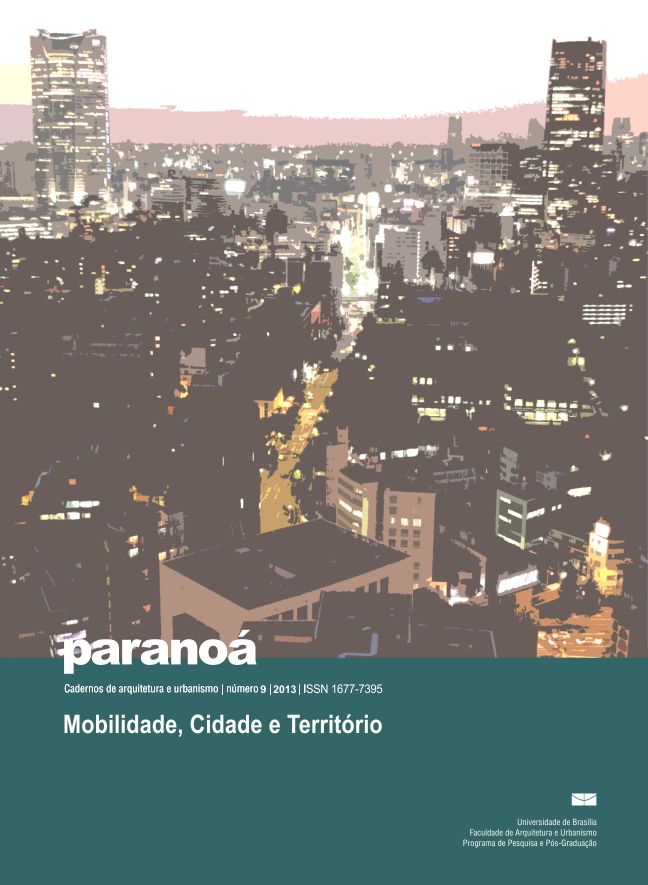Impacto do desenho da malha viária na mobilidade urbana
DOI:
https://doi.org/10.18830/issn.1679-0944.n9.2013.12290Keywords:
Spatial configuration, Space syntax, WalkabilityAbstract
The paper analyzes the performance of different street plans to determine which variables are present in each type, as first step to creating a walkability index. Three neighborhoods of Lisbon are used as case studies: (a) Campo de Ourique - with a grid street plan - (b) Graça ”“ with irregular roads - and (c) Telheiras - with a contemporary street plan. It was found that the grid-based street plan has more road homogeneity, a lower straightness index and a higher average integration index. The contemporary street plan performs the worst, while the organic street plan is ranked in the middle.
Downloads
Downloads
Published
How to Cite
Issue
Section
License
Autores que publicam nesta revista concordam com os seguintes termos:
- Autores mantém os direitos autorais e concedem à revista o direito de primeira publicação, com o trabalho simultaneamente licenciado sob a Licença Creative Commons Attribution que permite o compartilhamento do trabalho com reconhecimento da autoria e publicação inicial nesta revista. http://creativecommons.org/licenses/by/4.0
- Autores têm autorização para assumir contratos adicionais separadamente, para distribuição não-exclusiva da versão do trabalho publicada nesta revista (ex.: publicar em repositório institucional ou como capítulo de livro), com reconhecimento de autoria e publicação inicial nesta revista.
- Autores têm permissão e são estimulados a publicar e distribuir seu trabalho online (ex.: em repositórios institucionais ou na sua página pessoal) a qualquer ponto antes ou durante o processo editorial, já que isso pode gerar alterações produtivas, bem como aumentar o impacto e a citação do trabalho publicado (Veja O Efeito do Acesso Livre).















